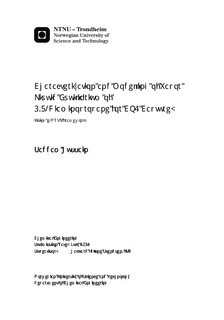Characterization and Modelling of Vapor Liquid Equilibrium of 1,3-Diaminopropane for CO2 Capture: - Using e-NRTL framework
Abstract
Carbon dioxide belongs to the class of greenhouse gases which are highly influential in global warming. Sometime ago, it was also proposed in some circles that Global warming is most like a conspiracy than a reality, but today, it has become a global phenomenon - a crucial fact. Reduction of CO2 emissions is a priority on international platforms and Sequestration is the only viable solution. Most of the CCS (CO2 Capture and Storage) is endorsing chemical absorption using amine based solvents. The optimal design of absorber requires a complete and diversified knowledge of Vapor Liquid Equilibrium, the complex phase and chemical equilibria and many more. For absorber design, the equilibrium stage approach is used, which relates the partial pressure of the acid gas and solubility of the gas in the solution. This factor generates the driving force along the length of the column necessary to evaluate the height. The cyclic capacity of the solution ensures that the system operates at the minimum circulation rate. All these parameter are based upon the properties of the amine under consideration. All amount of experimental data is required to avoid which thermodynamically rigorous model is essentially required which can interpolate and extrapolate confidently. But unfortunately, more we know about amines, less we know about them on the other hand. In this project, 1,3-Diaminopropane is considered for generating the dissociation constants against different temperatures which tells the story of the two amine groups attached, followed by solubility experimentation which was run for 2M amine concentration by employing the unloaded and loaded solutions. Later on, Vapor liquid equilibrium study was carried out for two concentrations of 2M and 5M. The VLE data was generated at different temperatures against different loadings. After the experimental analysis, the results were compared with the base case i.e. Monoethanol amine and secondly with the other diamine i.e. Piperazine. Lastly, the modeling was also done using the semi-empirical model of e-NRTL.
